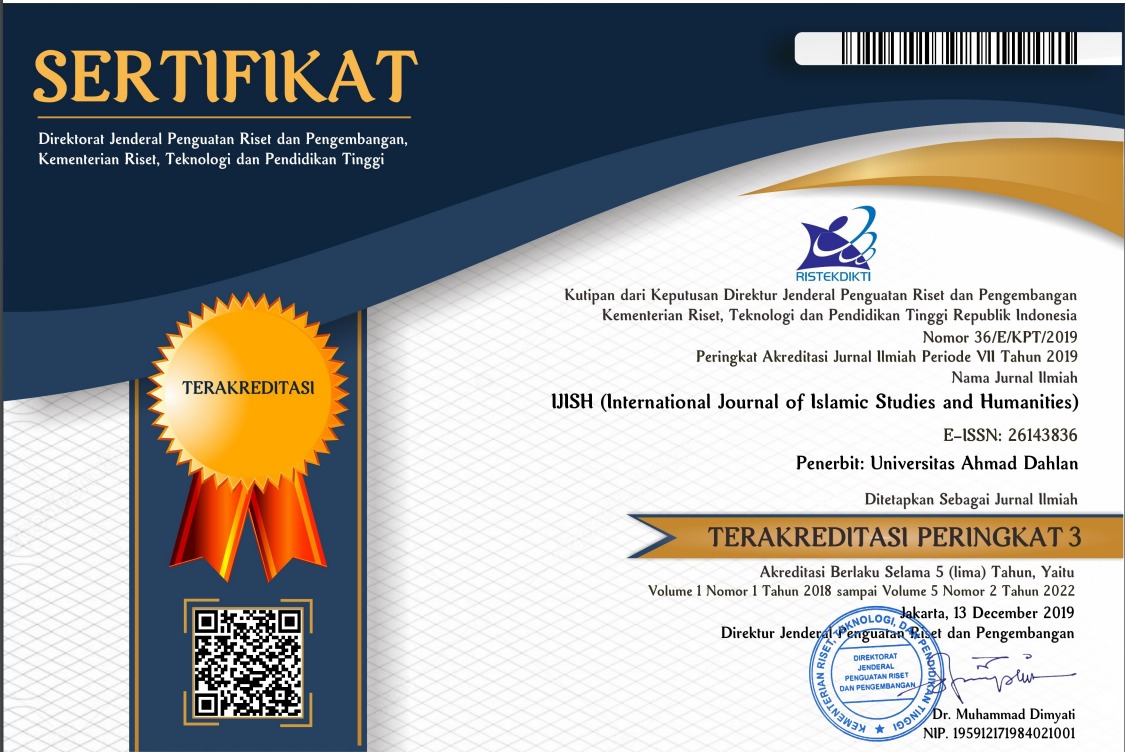Knowledge Management Implementation in Muhammadiyah Elementary School
DOI:
https://doi.org/10.26555/ijish.v2i2.989Keywords:
Knowledge Management, Muhammadiyah Elementary School, ImplementationAbstract
Knowledge Management is a systematic step in managing intellectual assets/knowledge and various information from individuals and organizations to be able to compete in order to add value and innovation. In the other hand, knowledge is one of the agency's assets and can be a separate competitive advantage if it can be managed properly. Current problems are technological developments and increased competition between educational institutions. If an educational institution does not have good knowledge management, of course, it will be left behind. Good management is needed and applied optimally. In Muhammadiyah Elementary School of Banguntapan, there are two management implementation aspects, namely identification of knowledge and identification of structures. Tacit and explicit factors as patterns of knowledge management development also require attention. If all of these factors are properly considered and applied, it will create a favorite school that has good knowledge management.
References
Alkhaldi, F. M., Olaimat, M., & Kohun, F. (2006). Knowledge Conversion and Transfer: A Mathematical Interpretation. Interdisciplinary Journal of Information, Knowledge & Management, 1.
Ali Ma’shum & Zainal Abidin Munawwir, (1997). Kamus Al-Munawwir, Surabaya: Pustaka Progresif,
Carl Davidson & Philip Voss, (2003). Knowledge Management: An Introduction to Creating Competitive Advantage from Intellectual Capital, New Delhi: Vision Books,
Davenport T.H & Prusank L., (1998). Working Knowledge: How Organizations Manage What They Know. Cambridge: Harvard Business School Press MA,
Departemen Pendidikan Nasional, (2013). Kamus Besar Bahasa Indonesia Pusat Bahasa, Jakarta: Gramedia Pustaka Utama.
Demarest, M. (1997). Understanding knowledge management. Long Range Planning. https://doi.org/10.1016/s0024-6301(97)90250-8
Earl, M. (2001). Knowledge management strategies: Toward a taxonomy. Journal of Management Information Systems. https://doi.org/10.1080/07421222.2001.11045670
Husaini Usman, (2011). Manajemen: Teori, Praktik dan Riset Pendidikan, Jakarta: Bumi Aksara.
John M. Echols & Hasan Shadily, (2006). Kamus Inggris Indonesia, Jakarta: Gramedia Pustaka Utama.
Manuj, I., & Mentzer, J. T. (2008). Global supply chain risk management strategies. International Journal of Physical Distribution and Logistics Management. https://doi.org/10.1108/09600030810866986
Mavodza, J., & Ngulube, P. (2012). Knowledge management practices at an institution of higher learning. SA Journal of Information Management. https://doi.org/10.4102/sajim.v14i1.496
Mcdermott, R., & O’Dell, C. (2001). Overcoming cultural barriers to sharing knowledge. Journal of Knowledge Management. https://doi.org/10.1108/13673270110384428
Nuryana, Z. (2017). Knowledge Management sebagai Upaya Pengembangan Learning Organization di Lembaga Pendidikan Islam. LITERASI Jurnal Pendidikan, Volume VII, 12–20. https://doi.org/http://dx.doi.org/10.21927/literasi.2017.8(1).11-19
Nonaka I., A Dynamic Theory of Organizational Knowledge Creation. Organization Science, Volume 5, Number 1. Retrieved from http:/www.jstor.org/stable/2635068.
Paul Tobing, (2007). Knowledge Management: Konsep, Arsite
Downloads
Additional Files
Published
How to Cite
Issue
Section
License
Authors who publish with IJISH (International Journal of Islamic Studies and Humanities) agree to the following terms:
- Authors retain copyright and grant the journal right of first publication with the work simultaneously licensed under a Creative Commons Attribution License (CC BY-SA 4.0) that allows others to share the work with an acknowledgment of the work's authorship and initial publication in this journal.Â
- Authors are able to enter into separate, additional contractual arrangements for the non-exclusive distribution of the journal's published version of the work (e.g., post it to an institutional repository or publish it in a book), with an acknowledgment of its initial publication in this journal.
- Authors are permitted and encouraged to post their work online (e.g., in institutional repositories or on their website) prior to and during the submission process, as it can lead to productive exchanges, as well as earlier and greater citation of published work.

This work is licensed under a Creative Commons Attribution-ShareAlike 4.0 International License.






